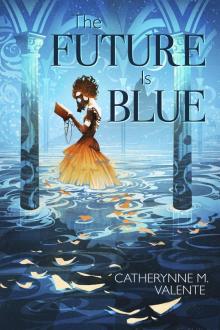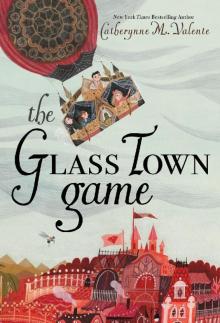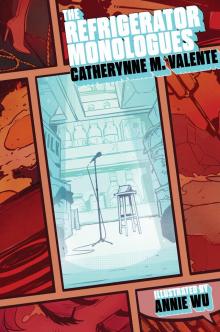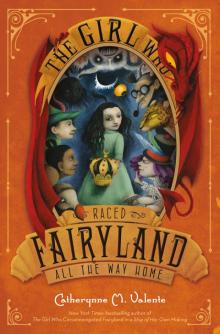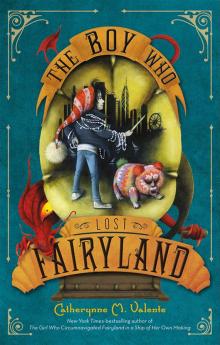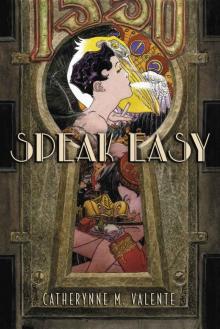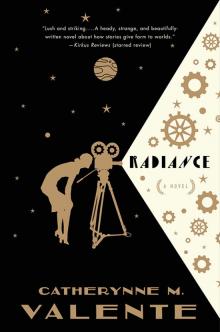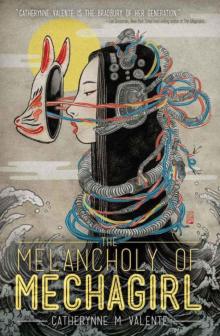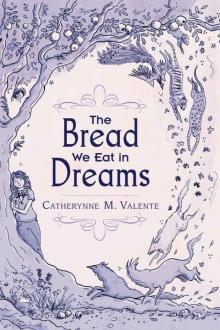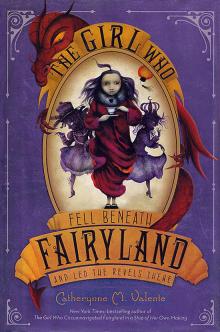


The Breaking Point: Short Stories
Daphne Du Maurier
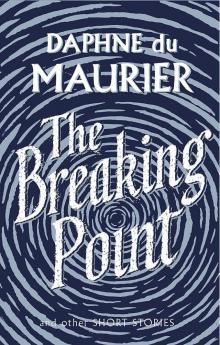
The Breaking Point: Short Stories
DAPHNE DU MAURIER INTRODUCED BY SALLY BEAUMAN
Hachette Digital
www.littlebrown.co.uk
Table of Contents
VIRAGO MODERN CLASSICS
Title Page
Copyright Page
Introduction
The Alibi
The Blue Lenses
Ganymede
The Pool
The Archduchess
The Menace
The Chamois
The Lordly Ones
VIRAGO MODERN CLASSICS
540
Daphne du Maurier
DAPHNE DU MAURIER (1907-89) was born in London, the daughter of the famous actor-manager Sir Gerald du Maurier and granddaughter of George du Maurier, the author and artist. A voracious reader, she was from an early age fascinated by imaginary worlds and even created a male alter ego for herself. Educated at home with her sisters and later in Paris, she began writing short stories and articles in 1928, and in 1931 her first novel, The Loving Spirit, was published. A biography of her father and three other novels followed, but it was the novel Rebecca that launched her into the literary stratosphere and made her one of the most popular authors of her day. In 1932, du Maurier married Major Frederick Browning, with whom she had three children.
Besides novels, du Maurier published short stories, plays and biographies. Many of her bestselling novels became award-winning films, and in 1969 du Maurier was herself awarded a DBE. She lived most of her life in Cornwall, the setting for many of her books, and when she died in 1989, Margaret Forster wrote in tribute: ‘No other popular writer has so triumphantly defied classification . . . She satisfied all the questionable criteria of popular fiction, and yet satisfied too the exacting requirements of “real literature”, something very few novelists ever do.’
By the same author
Fiction
The Loving Spirit
I’ll Never Be Young Again
Julius
Jamaica Inn
Rebecca
Frenchman’s Creek
Hungry Hill
The King’s General
The Parasites
My Cousin Rachel
The Birds and Other Stories
Mary Anne
The Scapegoat
Castle Dor
The Glass-Blowers
The Flight of the Falcon
The House on the Strand
Rule Britannia
The Rendezvous and Other Stories
Non-fiction
Gerald: A Portrait
The Du Mauriers
Golden Lads: A Story of Anthony Bacon,
Francis, and Their Friends
The Winding Stair: Francis Bacon, His Rise and Fall
Myself When Young
The Rebecca Notebook and Other Memories
The Breaking Point: Short Stories
DAPHNE DU MAURIER INTRODUCED BY SALLY BEAUMAN
Hachette Digital
www.littlebrown.co.uk
Published by Hachette Digital 2010
Copyright © Daphne du Maurier 1959
Introduction copyright © Sally Beauman 2009
The moral right of the author has been asserted
All rights reserved.
No part of this publication may be reproduced, stored
in a retrieval system, or transmitted in any form
or by any means, without the prior permission in writing
of the publisher, nor be otherwise circulated in any form of
binding or cover other than that in which it is published
and without a similar condition including this condition
being imposed on the subsequent purchaser.
All characters and events in this publication, other than
those clearly in the public domain, are fictitious
and any resemblance to real persons,
living or dead, is purely coincidental.
A CIP catalogue record for this book is available
from the British Library.
eISBN : 978 0 7481 1466 5
This ebook produced by JOUVE, FRANCE
Hachette Digital
An imprint of
Little, Brown Book Group
100 Victoria Embankment
London EC4Y 0DY
An Hachette Livre UK Company
Note
THERE COMES A moment in the life of every individual when reality must be faced. When this happens, it is as though a link between emotion and reason is stretched to the limit of endurance, and sometimes snaps. In this collection of stories, men, women, children and a nation are brought to the breaking-point. Whether the link survives or snaps, the reader must judge for himself.
Introduction
The eight short stories here were first published in 1959. They were written immediately after one of Daphne du Maurier’s finest novels, The Scapegoat, and immediately before The Infernal World of Branwell Brontë, her biography of the most tormented of the Brontë siblings. The Scapegoat concerns itself with the question of doubles or Doppelgänger, with the extremes for good and evil we all contain within ourselves; The Infernal World is a study of a greatly gifted, fabulous boy, fatally ill equipped to deal with the real world, and ultimately broken by it.
The stories here reflect the concerns of those adjacent books: they are dark, difficult, perturbing - and sometimes shocking. Du Maurier grouped them together under the title The Breaking Point - and they were written during a period when she herself came close to a severe nervous breakdown. They reflect and echo that psychological stress; it runs through them like a fault line. Here, we are a stylistic world away from the smooth technical assurance of her bestselling novels of the 1930s and 1940s: these stories are jagged and unstable; they constantly threaten and alarm; they tip towards the unpredictability of fairy tale, then abruptly veer towards nightmare. They are elliptic, awkward - and they are fascinating. As du Maurier herself acknowledged, she had come perilously close to madness immediately before she wrote them, and these stories were part of her cure - the means by which an extraordinary novelist wrote herself back to sanity. This is fiction - but it is also therapy.
One of the most famous stories in this collection is ‘The Blue Lenses’. It is set in a nursing home - and it was in a private nursing home in London in July 1957 that the cracks first began to open beneath Daphne du Maurier’s feet. The victim-patient in her story is a woman, but in her fiction du Maurier often chooses to ‘re-sex the pronouns’ (as Auden put it), and the real patient in the London nursing home, confined there after a severe breakdown aggravated by alcoholism, was her husband, Lt. General Sir Frederick (‘Boy’) Browning.
Her husband’s collapse caused an immediate crisis, exacerbated, perhaps, by the fact that Daphne was determined to shroud it in secrecy, maintaining a front to all but a very few of her closest friends. Forced to leave Cornwall and her beloved home, Menabilly, she travelled to London to help look after her husband, staying in the small, dreary flat on the sixth floor of a large block in Chelsea, that her husband had leased years before. It had been his London base for some ten years - first when he was at the War Office, and then when he became Comptroller of Princess Elizabeth’s household and subsequently Treasurer to the Duke of Edinburgh.While she was there, living in a shabby confined space that was the antithesis of Menabilly, in drab rooms that always smelled faintly of gas, in a flat she called ‘The Rat Trap’, in a city she had always loathed, in which she had always found it impossible to write, Daphne received a telephone call from a woman. She was, she announced, Browning’s mistress: they had been having an affair for some years; it was serious. She
wanted Daphne to ‘release’ her husband and set him free: his breakdown, she informed her, was the result of the intolerable strain that marital deception and leading a double life had imposed upon him.
The effect upon Daphne was profound. Looking back over the patterns of her marriage, with the hindsight of an outsider, this might seem strange. After all, Daphne had not been faithful to her husband: there had been a series of affairs, with men and with women, dating back to the 1930s. For years, they had seemed a semi-estranged couple, leading separate lives, she in Cornwall writing, her husband in London, the perfect courtier. For years they had been reunited only for holidays and at weekends, when Browning made the long and arduous train journey to Cornwall. Nor was this the first instance of Browning’s capacity to entangle himself with other women: he had embarrassed and infuriated Daphne with what seems a fairly innocent, if foolish, infatuation with a young woman who worked in a shop in Fowey (the town closest to Menabilly). What her husband seems to have been seeking was kindness, ordinariness and companionship; the isolation so essential to du Maurier was fatally wounding to her husband. Indeed, although he recovered from the 1957 breakdown to a degree, his last years were sad ones. He was to die in March 1965 - his wife did not attend his funeral, despite being devastated, just as, many years earlier, she had not attended her father’s.
Given that Daphne had never wanted her husband to live full time with her in Cornwall, given her marked impatience with his moods and depression, given she both welcomed and deeply needed the isolation she enjoyed at Menabilly during the week, one might not have been surprised had she taken a laissez-faire attitude to this affair once she learned of it. Was it so unthinkable that Moper (as the family had nick-named her husband) should alleviate his loneliness - indeed his very evident unhappiness during this period - in the arms of a woman she dubbed ‘The Snow Queen’? Daphne was unconventional in many ways: she was neither narrow-minded, nor puritanical. One might have expected that, with dignity, she would have accepted some form of ‘open’ marriage from that date onwards.
Instead she was plunged into a state of despair, anger, guilt, anguish and paranoia. But she fought to save her marriage - and fought hard - from the instant she realised it was threatened. Browning agreed to end his liaison, a task he undertook gradually, with a certain amount of backsliding. Released from his nursing home, he returned to Menabilly to recuperate for the remainder of the summer - once there, Daphne attempted to rebuild her fragmented marriage. As her letters of the period make clear, she fully accepted her part in its breakdown, indeed was racked with guilt for her own failings. In an effort to eradicate all secrets between them, she confessed her previous infidelities to her husband. She acknowledged to him and to others that her craving to write and her ‘passion for solitude’ had contributed to Browning’s despair and decline. She resolved that, from then on, she would work at her marriage.
But marriage was not Daphne’s work, and never had been, and although her wish to salvage her relationship with her husband was clearly sincere (and passionately so), there was ambivalence and resentment from the first. Her unrest was compounded by the onset of menopause, which brought with it recurring dreams of drowning - an influence apparent in ‘The Pool’, the fourth of the stories here. Further stress was caused, the same year, by the death of her mother, with whom her relationship had always been troubled. Once her husband returned to work at Buckingham Palace that autumn, she committed herself to spending more time with him in London. But the constant journeying back and forth, her exile from Menabilly, fount of her imagination for decades, and her grinding misery in the city undermined both her health and her resolve. For her, the role of the conventional wife was torture: she could see her duty in this respect - but it came at a cost: it was death to her as an artist. ‘I’m sure deep down he [Browning] grudges my work,’ she wrote to her friend the novelist Oriel Malet the following February, ‘and wants to see me as a person waiting to cook his steak . . . I am never alone . . . I must just hang on and hope I don’t crack before Easter.’
‘I had a bloody long ten days in London,’ she wrote a month later, by which time the strain on her is fully apparent: ‘My only pleasure was to paint the horrible view from the bedroom at the flat, and I made it all strident and screaming, because of my hate, with glaring chimney-pots and those awful Power Station Battersea things, belching evil smoke . . . [my] paintings are very out of proportion and crude, but in a queer way they have a sort of power, like paintings done by madmen. (Perhaps I am!).’
It is difficult to judge exactly how close Daphne came, that year, to breaking point. Judging by the incoherence of some of her letters written then, and the testimony of friends who witnessed episodes of paranoia in which she believed herself watched, followed and plotted against, she came perilously close to the edge of insanity, and perhaps, on occasion, slipped over. But she was able to claw her way back, and the route she took, powered by her imagination, resonates throughout these eight Breaking Point stories.
In the first, the troubling and terrifying ‘The Alibi’, a man, James Fenton, adopts a new and secret identity. He embarks on a double life, toys with the idea of an acte gratuit (a motiveless murder), and then displaces that ugly violence into art. Instead of killing his chosen victims, a woman and her heartbreakingly neglected son, he paints them - and the unskilled fury he exhibits as he stabs oil on to canvas echoes the rage with which Daphne, trapped in her husband’s Chelsea flat, painted her own ‘strident’ and ‘screaming’ canvases.
In the second, ‘The Blue Lenses’, a near-blind woman in a nursing home has an operation on her eyes - and acquires abnormal, yet truthful vision. Now she can see the treachery of her husband and her nurse; now she can understand that her own nature condemns her to be a victim, plotted against and perhaps to be disposed of. In both stories, there is possible gender adjustment; in both, there is a subterranean river of autobiography, a dark underground torrent that flows under and through the work, occasionally breaking the surface - and this flow can be perceived throughout, right to the last, ‘The Lordly Ones’, in which an afflicted terrorised boy, born dumb, desperate to communicate, speaks to the reader with heart-rending eloquence.
All of du Maurier’s central concerns can be found in these eight strange works: the preoccupation with double lives, split personalities and divided loyalties; the unflinching investigation of perversity, of purpose (and purposelessness) in art. There is the same clear-eyed scrutiny of love and its potential rapacity that we find in her novels. There is the subtle questioning of the nature of crime, whereby the victim and perpetrator constantly switch roles, until it is almost impossible to judge which is the guilty party - a preoccupation, this, that can be seen in du Maurier’s Rebecca and My Cousin Rachel.
These stories do not make easy reading.They are shot through with darkness, terror and anger. They occupy that danger zone where the distinctions between health and sickness, sanity and madness are blurred. Not by any means technically perfect, they are nonetheless extraordinary.
Sally Beauman
London, October 2008
The Alibi
The Fentons were taking their usual Sunday walk along the Embankment. They had come to Albert Bridge, and paused, as they always did, before deciding whether to cross it to the gardens, or continue along past the houseboats; and Fenton’s wife, following some process of thought unknown to him, said, ‘Remind me to telephone the Alhusons when we get home to ask them for drinks. It’s their turn to come to us.’
Fenton stared heedlessly at the passing traffic. His mind took in a lorry swinging too fast over the bridge, a sports car with a loud exhaust, and a nurse in a grey uniform, pushing a pram containing identical twins with round faces like Dutch cheeses, who turned left over the bridge to Battersea.
‘Which way?’ asked his wife, and he looked at her without recognition, seized with the overwhelming, indeed appalling impression that she, and all the other people walking along the Embankment or crossing
the bridge, were minute, dangling puppets manipulated by a string. The very steps they took were jerking, lopsided, a horrible imitation of the real thing, of what should be; and his wife’s face - the china-blue eyes, the too heavily made-up mouth, the new spring hat set at a jaunty angle - was nothing but a mask painted rapidly by a master-hand, the hand that held the puppets, on the strip of lifeless wood, matchstick wood, from which these marionettes were fashioned.
He looked quickly away from her and down to the ground, hurriedly tracing the outline of a square on the pavement with his walking-stick, and pin-pointing a blob in the centre of the square. Then he heard himself saying, ‘I can’t go on.’
‘What’s the matter?’ asked his wife. ‘Have you got a stitch?’
He knew then that he must be on his guard. Any attempt at explanation would lead to bewildered stares from those large eyes, to equally bewildered, pressing questions; and they would turn on their tracks back along the hated Embankment, the wind this time mercifully behind them yet carrying them inexorably towards the death of the hours ahead, just as the tide of the river beside them carried the rolling logs and empty boxes to some inevitable, stinking mud-spit below the docks.
Cunningly he rephrased his words to reassure her. ‘What I meant was that we can’t go on beyond the houseboats. It’s a dead-end. And your heels . . .’ he glanced down at her shoes . . . ‘your heels aren’t right for the long trek round Battersea. I need exercise, and you can’t keep up. Why don’t you go home? It’s not much of an afternoon.’

